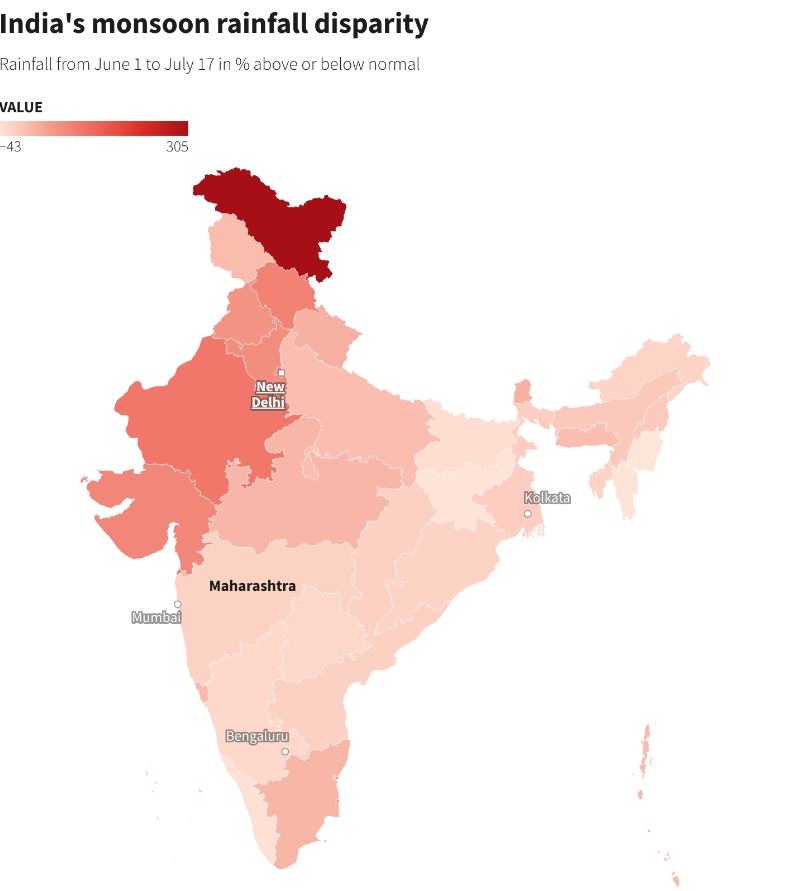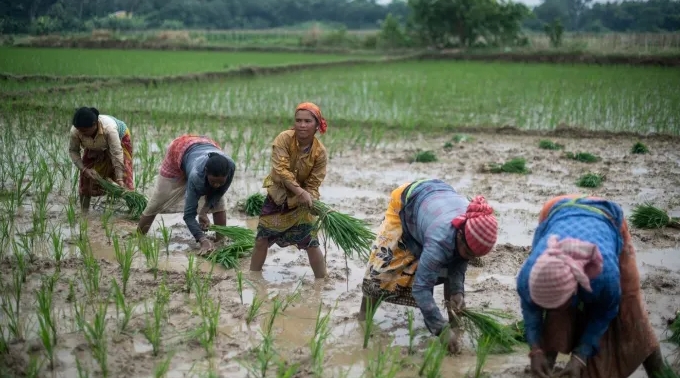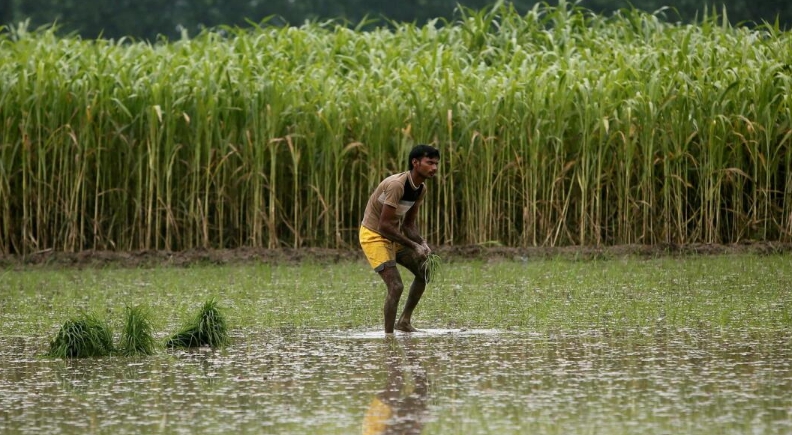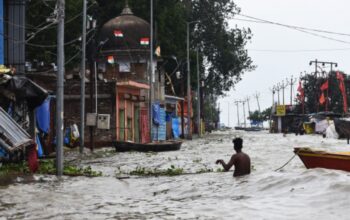Since the beginning of the monsoon season on June 1, India has experienced average rainfall, alleviating initial concerns about the potential impact of the El Nino weather pattern, which was expected to result in lower rainfall this year. Initially, there was a delay in the monsoon’s arrival, leading to a significant rain deficit until mid-June.
However, heavy rains in the last week of June managed to erase this shortfall. Despite average monsoon rains being generally beneficial for Indian farmers, this year’s uneven distribution of rainfall has given rise to new worries.
Unpredictable Allocation
As the monsoon season progresses, there have been notable disparities in rainfall across India. Several northern and north-western states have experienced excessive rains, while southern and eastern regions have been unusually dry. According to data from the India Meteorological Department (IMD), only one-third of the country has received average rainfall so far. Conversely, about 34% of India has faced deficient rains, while 32% has been affected by excessive rainfall, as indicated by the data.
During this season, states like Haryana, Punjab, Gujarat, Himachal Pradesh, and Rajasthan have experienced nearly double their usual rainfall. Conversely, Jharkhand, Bihar, Telangana, Chhattisgarh, and Kerala have received up to 41% less rainfall than their normal averages.
The Effect On Summer-Sown Crops
Over the past two weeks, the sowing of rice, cotton, oilseeds, and pulses has picked up pace following a slow start. However, plantings are still behind last year’s progress. Unfortunately, heavy rainfall has caused damage to newly planted rice crops in northern states like Punjab, Haryana, Himachal Pradesh, and Uttar Pradesh, leading many farmers to consider the need for replanting.

Conversely, in states like Maharashtra, Telangana, Andhra Pradesh, Chhattisgarh, Bihar, and West Bengal, the insufficient rainfall has caused delays in the planting of rice, corn, cotton, soybeans, groundnuts, and pulses. Additionally, sugarcane growers in major producing states like Maharashtra and Karnataka are concerned about the limited rainfall during the critical growth period of the crop, which may lead to reduced yields and a decline in sugar output.
Impact On Crops: Which Ones Are Hardest Hit?
The uneven distribution of rainfall is having a significant impact on rice, vegetables, and pulses. In northern states, paddy fields have been submerged for more than a week, resulting in the destruction of newly planted seedlings. This has left farmers with no choice but to wait for the waters to recede before they can replant their crops.
In other prominent rice-growing states like West Bengal, Bihar, Chhattisgarh, Andhra Pradesh, and Telangana, farmers have diligently prepared paddy nurseries. However, the transplantation of seedlings has been hindered due to insufficient rainfall in these regions.
Initially, it was anticipated that the area under rice cultivation would expand following New Delhi’s increase in the rice purchase price. However, industry officials now project a slight decrease. Farmers have currently planted paddy rice on an area that is 6% smaller than the previous year’s cultivation in 2022.
The irregular distribution of rainfall is also impacting vegetables such as tomatoes, eggplant, capsicum, and spinach. In northern India, standing crops have suffered damage due to floods, while in the southern regions, planting has been delayed. Consequently, the prices of certain vegetables, including tomatoes, have surged to record highs.
The planting of pulses, which serves as a crucial protein source for India’s substantial vegetarian population, has faced delays. As pulses are primarily rain-fed crops, the postponement is expected to result in lower-than-normal yields.

According to data compiled by the farm ministry, the planting of pulses has been carried out on an area that is 13% smaller than the previous year. Similarly, the planting areas for soybean and cotton have experienced a decline of 2% and 12%, respectively.
Impact Of Delayed Planting On Yields
In much of India, delays in planting after mid-July usually lead to lower yields. As mid-September approaches, temperatures start to rise in several regions, potentially affecting pod formation and filling in crops that were planted late.
According to weather agencies, there are forecasts suggesting that El Nino might restrict rainfall in August and September, precisely when crops reach their maturity phase and require ample moisture. The anticipated lower rainfall during this critical period could potentially result in reduced production.
How Do Winter-Sown Crops Get Affected?
The delays in planting summer crops have a cascading effect, leading to postponed harvesting, which in turn affects the late sowing of winter crops like wheat, rapeseed, and chickpeas. The success of winter crops largely relies on cold weather, but in recent years, higher temperatures during the maturity phase have caused yield losses.
Weather agencies have issued predictions of a robust El Nino during the Indian winter months, which may result in higher-than-normal temperatures and potentially lead to reduced yields of wheat and rapeseed crops.
For more than a year, India has faced challenges in controlling wheat prices, and the prospect of lower output in the upcoming season may further complicate these efforts. Additionally, the reduced rapeseed output could potentially require an increase in vegetable oil imports.





